Blog

No Surprise: Sale/Refi Incentive Highest for 2008 Loans
Mortgagernprepayments have picked up over the last three months as interest rates pulledrnback from recent highs. Black KnightrnFinancial Services said today that the rate of prepayment which is closelyrnassociated with refinancing, was at 0.9 percent in May. The rate had dropped to around 0.6 percent atrnthe end of 2013 and the beginning of this year.</p
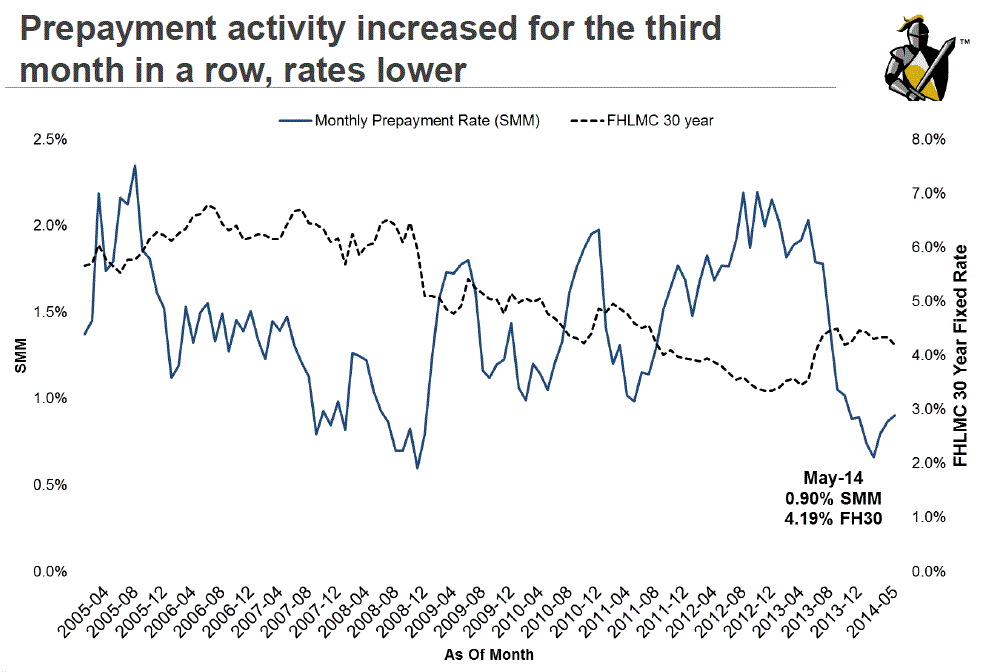 </p
</p
BlackrnKnight’s monthly Mortgage Monitor</ipointed to the 2008 vintage of mortgages as having the highest refinance rate,rnhovering around 1.5 percent in both April and May. While pre-2008 vintages had interest ratesrnhigher than the 5.63 percent average (based on a 30-year fixed rate mortgage) ofrnloans originated in 2008, the rate of prepayment was lower, around 1.1rnpercent. Prepayment rates for post 2008rnvintages, while much below that of 2008 and the average interest rates muchrnlower, trended higher as well over the March to May period. </p
Though refinance activity is stillrndown significantly from the levels seen in 2012 and early last year, it hasrnincreased 21 percent since January 2014. Black Knight also found that seasonalrnpurchase activity has picked up, with approximately 897,000 purchasernoriginations through April, a level on par with 2013 (898,000 over the samernperiod), and better than 2012 (847,000). </p
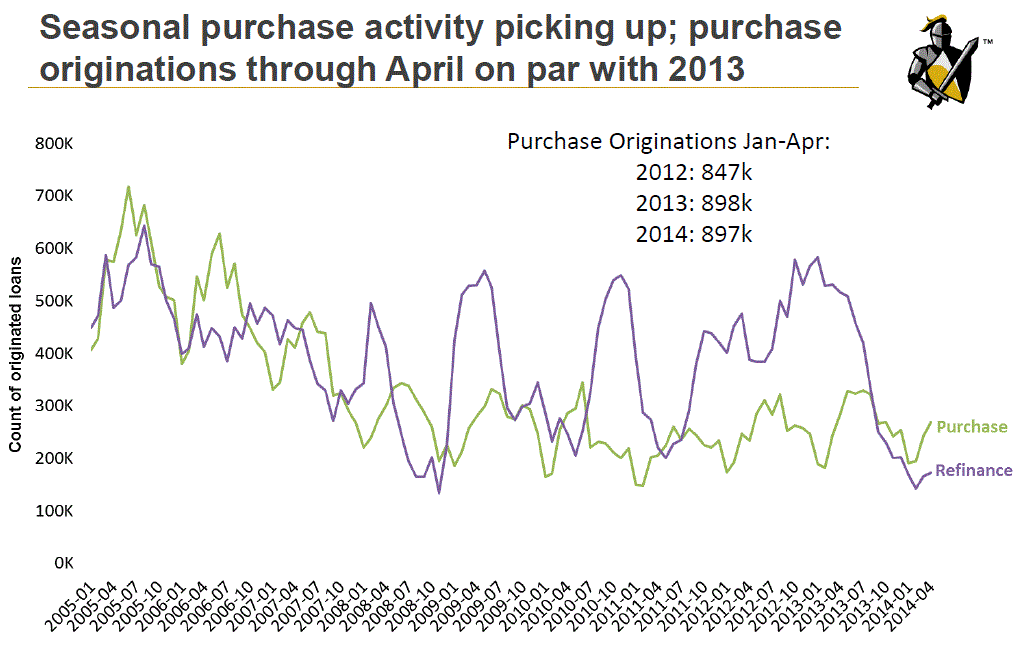 </p
</p
Credit scores for both purchase andrnrefinance loans remain largely unchanged as do loan-to-value standards with twornexceptions. Credit scores for FreddiernMac and Fannie Mae (GSE) refinancing and refinancing through GNMA have dippedrnappreciably since last fall. </p
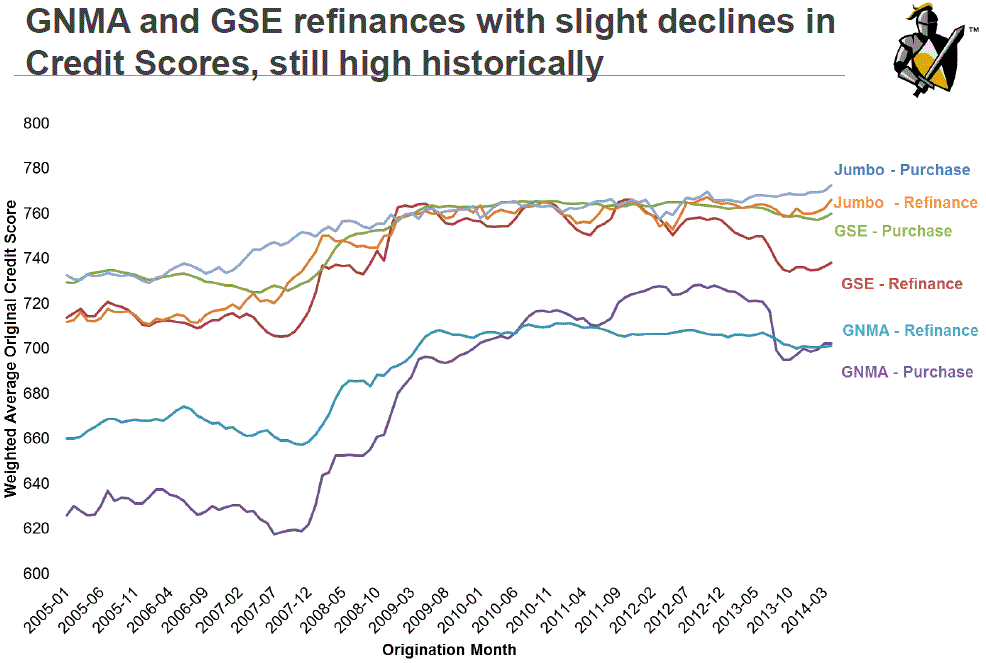 </p
</p
In the full Mortgage Monitor Black Knight expanded on foreclosure data itrnreleased last month in its “early look.” rn</p
Foreclosurernstarts reversed an eight month trend in May, rising 9.5 percent in May torn86,000. Even with the increase,rnforeclosure starts are down 32 percent from the same period in 2013 and are atrnthe lowest point since 2007. New Jerseyrnwas the only state where foreclosure starts in May exceeded those in May 2003. Foreclosurernstarts peaked nationally in May 2009 at 316,000. As hasrnalmost always been the case throughout the foreclosure crisis, most starts arernon loans that have been delinquent for a protracted period of time.</p
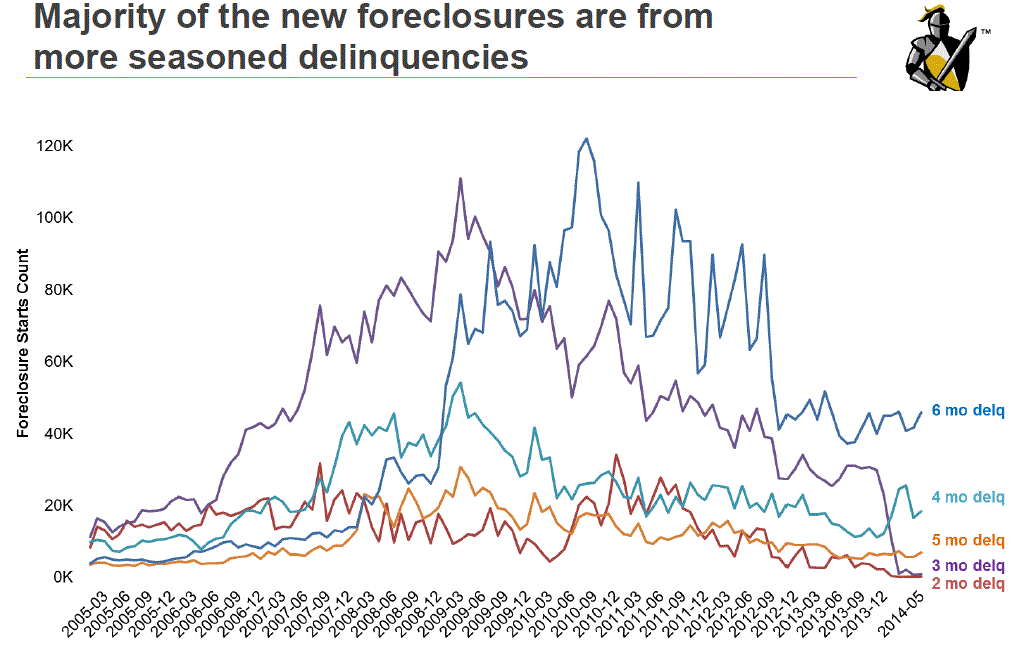 </p
</p
“While foreclosure starts did risernover 9 percent in May, it’s important to remember the historical trend is stillrnone of improvement,” said Kostya Gradushy, Black Knight’s manager of Loan Datarnand Customer Analytics. “On a year-over-year basis, January through Mayrnforeclosure starts were still down 32 percent, and we are still looking at thernlowest level of foreclosure starts in seven years. Additionally, over half ofrnthese starts are repeat foreclosures, rather than new entries into thernpipeline, That is, these are loans that had been in foreclosure, shifted backrnto either current or delinquent status by way of modification, repayment planrnor some action by the borrower, but have now fallen into foreclosure oncernagain. Almost 80 percent of May’s foreclosure starts were from 2008 or earlierrnvintage loans.” </p
Completed foreclosures orrnforeclosure sales were less than half of starts and continued their downwardrntrend. Sales totaled 42,000,rnrepresenting a 3.4 percent decrease from April and down from a peak of 124,000rnsales in September 2010.</p
The foreclosure inventory alsorncontinued to shrink and was down to 1.91 percent of mortgaged properties inrnMay. Delinquencies are also at 6-yearrnlows. After peaking at 10.57 percent inrnJanuary 2010, the national delinquency rate is now 5.62 percent.</p
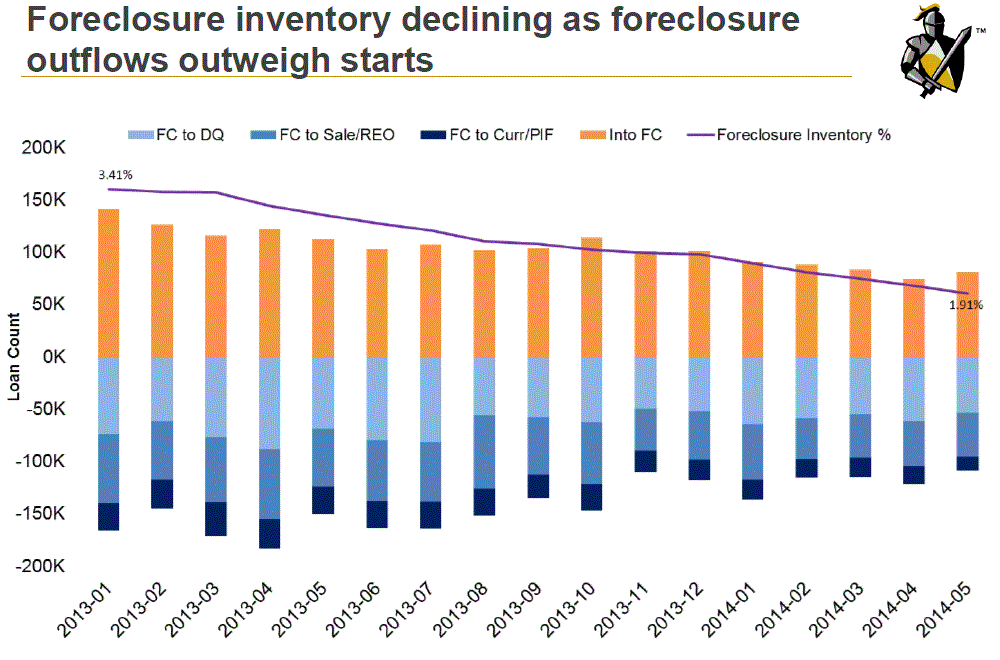 </p
</p
Home price appreciation continues tornhelp drive down the share of borrowers underwater on their mortgages. As ofrnApril, the share of loans in negative equity positions had declined to 8.9rnpercent. However, the situation is significantly worse for loans eitherrnseriously delinquent (90 or more days past due) or in foreclosure. Black Knightrnfound that 78 percent of this subset of distressed loans had combinedrnloan-to-value ratios of 100 percent or more.</p
Finally, the Mortgage Monitor said there is a growing lack of incentive forrncurrent homeowners to sell their homes. rnMan, even where equity is positive, do not have significant enough to allowrnfor a downpayment on a trade-up home. Othersrnhave current low interest rates they would not be able to match with a newrnpurchase loan. For an estimated 49rnpercent of homeowners, both of those disincentives apply.</p
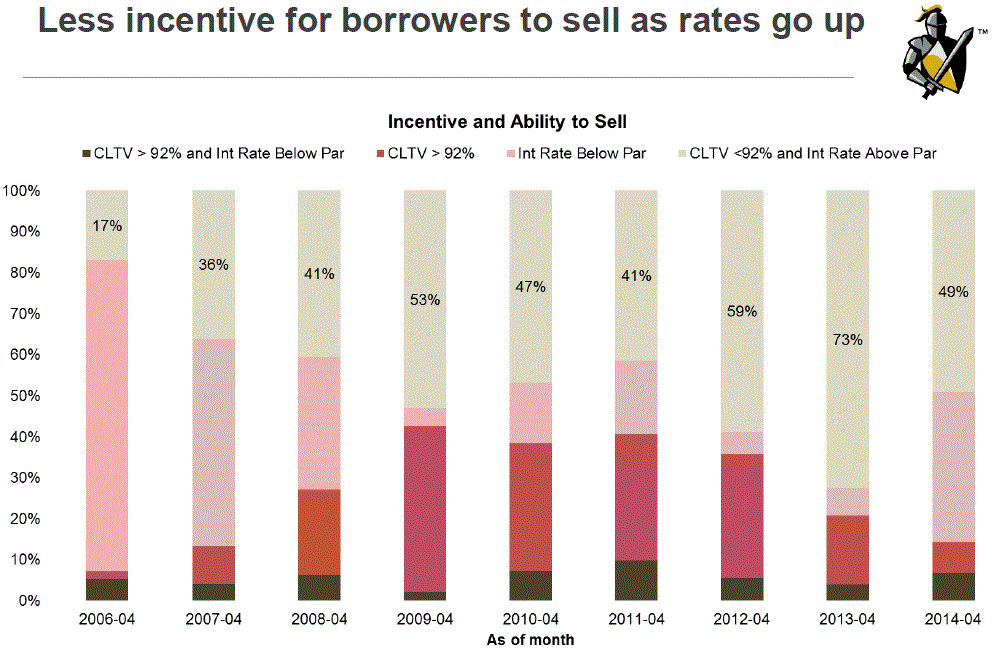
All Content Copyright © 2003 – 2009 Brown House Media, Inc. All Rights Reserved.nReproduction in any form without permission of MortgageNewsDaily.com is prohibited.
Latest Articles
By John Gittelsohn August 24, 2020, 4:00 AM PDT Some of the largest real estate investors are walking away from Read More...
Late-Stage Delinquencies are SurgingAug 21 2020, 11:59AM Like the report from Black Knight earlier today, the second quarter National Delinquency Survey from the Read More...
Published by the Federal Reserve Bank of San FranciscoIt was recently published by the Federal Reserve Bank of San Francisco, which is about as official as you can Read More...

Comments
Leave a Comment